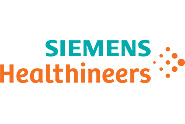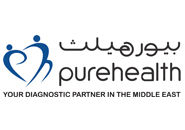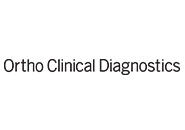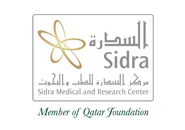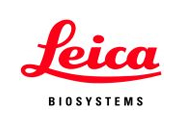The Quest For Standardised Laboratory Reporting
Dr Jacqueline Gosink, EUROIMMUN AG, Luebeck, Germany, 16 January 2017
Anti-nuclear antibody (ANA) testing is a cornerstone of autoimmune diagnostics. ANA occur in a variety of autoimmune diseases, including systemic autoimmune rheumatic diseases (SARD), systemic lupus erythematosus (SLE), mixed connective tissue disease (MCTD), Sjögren’s syndrome (SjS), systemic sclerosis (SSc), polymyositis (PM), dermatomyositis (DM) and primary biliary cirrhosis (PBC). Detection and classification of ANA is a major criterion for diagnosing and differentiating these diseases.
ANA are detected by indirect immunofluorescence test (IIFT) followed by specific confirmatory tests such as ELISA or immunoblot. However, ANA testing strategies and result reporting vary greatly between laboratories. An international consensus on ANA patterns (ICAP, www.ANApatterns.org) has recently been discussed with the goal of harmonising the nomenclature and interpretation of ANA results.
Gold standard IIFT
IIFT on human epithelial (HEp-2) cells is the gold standard for detection of ANA. Different types of ANA give rise to characteristic staining patterns on the HEp-2 cells, depending on the cellular location and properties of the antigenic target. Analysis of the fluorescence pattern enables classification of the antibody or antibodies present in the patient sample. Since the cell substrate contains the complete antigen spectrum, over 100 different autoantibodies can be investigated simultaneously, including autoantibodies directed against as yet unknown antigens or against antigens, which cannot yet be isolated. A negative result excludes the presence of all these antibodies. An alternative to HEp-2 cells is offered by HEp-20-10 cells, which exhibit a high proportion of mitotic phases and thus provide easier evaluation of antibodies for which evaluation of mitotic structures is crucial.
Single antigen substrates (e.g. SS-A, SS-B, Scl-70, Jo1, ribosomal P-proteins, RNP/Sm, Sm) in the form of purified-antigen dots (EUROPLUS) allow monospecific confirmation of antibodies in IIFT. The monospecific substrates can be analysed in parallel to the HEp-2 cells as BIOCHIP Mosaics, thus no additional incubations are required. Moreover, analysis of primate liver alongside HEp-2 cells provides additional security in the evaluation of ANA IIFT results. The fluorescence patterns of the two substrates can be compared and results verified reciprocally. The primate liver also allows identification of additional autoantibodies, thus helping to make important unexpected diagnoses.
Overview of ICAP Classification Tree
The umbrella term ANA is, for historical reasons, used to refer to all cellular antibodies that are detected on HEp-2 cells. In the ICAP consensus these are divided into three major categories, namely nuclear (true ANA), cytoplasmic and mitotic fluorescence patterns. Each category is subdivided into groups and subgroups of patterns, creating a classification tree. Each pattern and sub pattern is assigned an anti-cell (AC) pattern code from AC-1 to AC-28. The patterns are additionally designated as competent-level or expert-level reporting, depending on the clinical relevance and easiness of recognition. The reporting level is a fluid system, which will be adapted in the future based on feedback from users.
Nuclear Patterns (True ANA)
Nuclear patterns are defined as any staining of the HEp-2 interphase nuclei. The nomenclature for nuclear patterns is primarily based on the reactivity observed in the nucleoplasm (e.g. homogeneous or speckled) and the nuclear subcomponents that are recognised (e.g. centromere or nucleolar). The nuclear patterns comprise homogeneous, speckled, centromere, discrete nuclear dots, nucleolar, nuclear envelope and pleomorphic patterns. DFS70 belongs to the speckled group. The centromere pattern belongs to the discrete nuclear dots, but is given its own grouping due to its characteristic pattern and frequent occurrence in the clinical setting. The nuclear pattern groups are further divided into subgroups, for example, fine or large/coarse speckled; multiple or few nuclear dots; homogeneous, clumpy or punctate nucleolar; smooth or punctate nuclear envelope; and PCNA-like or CENP-F-like pleomorphic patterns.
The classification of the nuclear pattern provides information about the likely target antigens and thus possible disease indications (Table 1). For example, the homogeneous pattern arises from reactions with chromatin components such as double-stranded DNA, histones and/or nucleosomes. These autoantibodies are associated with SLE, drug-induced lupus and juvenile idiopathic arthritis. Other nuclear reactions can help clinicians to delimit, for example, MCTD, SjS, SSc, PM, DM, PBC or other autoimmune diseases. Mixed patterns can occur if more than one autoantibody is present in the patient sample, for example autoantibodies to both centromere (nuclear) and mitochondria (cytoplasmic) frequently co-occur PBC.
Cytoplasmic Patterns
Cytoplasmic patterns are defined as any staining of the HEp-2 cytoplasm. The nomenclature is primarily based on the reactivity observed in the cytoplasm (e.g. fibrillar or speckled) and the cytoplasmic structure that is recognised (e.g. rods and rings). The five main cytoplasmic patterns comprise fibrillar, speckled, reticular/mitochondrion-like (AMA), polar/Golgi-like, and rods and rings. The fibrillar pattern is subdivided into linear, filamentous and segmental; while the speckled pattern is subcategorised into discrete dots, dense fine speckled and fine speckled. Cytoplasmic autoantibodies of different specificities are found in a range of diseases (Table 2), including MCTD, PM, DM, SLE, SSc, PBC, Crohn’s disease, ulcerative colitis and myasthenia gravis. Cytoplasmic patterns should now be reported in patient results and not released as ANA negative.
Mitotic Patterns
Mitotic patterns are defined as patterns that address cell domains strongly related to mitosis. The mitotic patterns comprise centrosomes, spindle fibres with subpattern nuclear mitotic apparatus (NuMA), intercellular bridge and mitotic chromosome coat. Some mitotic patterns (e.g. centrosomes) are not exclusively associated with mitosis, but exhibit very distinctive features in mitotic cells. Mitotic antibodies are rare occurrences in diseases such as SSc, SLE, SjS and Raynaud’s phenomenon (Table 3).
Confirmation of IIFT results
Positive results in the ANA IIFT screening assay should always be confirmed in additional specific testing. An ideal follow-up assay is multiplex immunoblot containing 23 antigens (EUROLINE ANA Profile 23, Figure 1), which allows simultaneous confirmation and differentiation of the most important ANA in systemic autoimmune diseases. The test antigens comprise dsDNA, nucleosomes, histones, SS-A, Ro-52, SS-B, RNP/Sm, Sm, Mi-2α, Mi-2β, Ku, CENP A, CENP B, Sp100, PML, Scl-70, PM-Scl100, PM-Scl75, RP11, RP155, gp210, PCNA and DFS70. This broad profile is the first confirmatory assay to cover all of the nuclear patterns defined in the consensus. The antigens are coated onto individual membrane chips, ensuring optimal detection conditions for each antibody and highly reliable results. ELISA profiles containing relevant combinations of up to 11 antigens are also suitable for characterisation of antibody specificities.
Perspectives
The ICAP statement has laid the foundation for standardised nomenclature and reporting of ANA test results. Outstanding issues to be addressed in future editions are the classification of composite and mixed patterns (e.g. Scl70-like), the inclusion of rare patterns, and whether cytoplasmic and mitotic antibodies should be classified under ANA positive or reported separately. Optimal testing strategies will also be examined. The consensus is an on-going process, which it is hoped will mature into a global standard incorporating input from laboratories and clinicians worldwide.
A further important contribution to ANA standardisation is the increasing use by laboratories of pattern recognition software. Today’s software systems (e.g. EUROPattern) provide fully automated identification of all immunofluorescence patterns on HEp-2 cells, including nuclear, cytoplasmic, mitotic and mixed patterns, and also include a titer designation. Automation of IIFT evaluation increases the consistency between different readers and laboratories, and boosts the speed and efficiency of the evaluation procedure. The software can be easily adapted as the interpretation guidelines evolve



